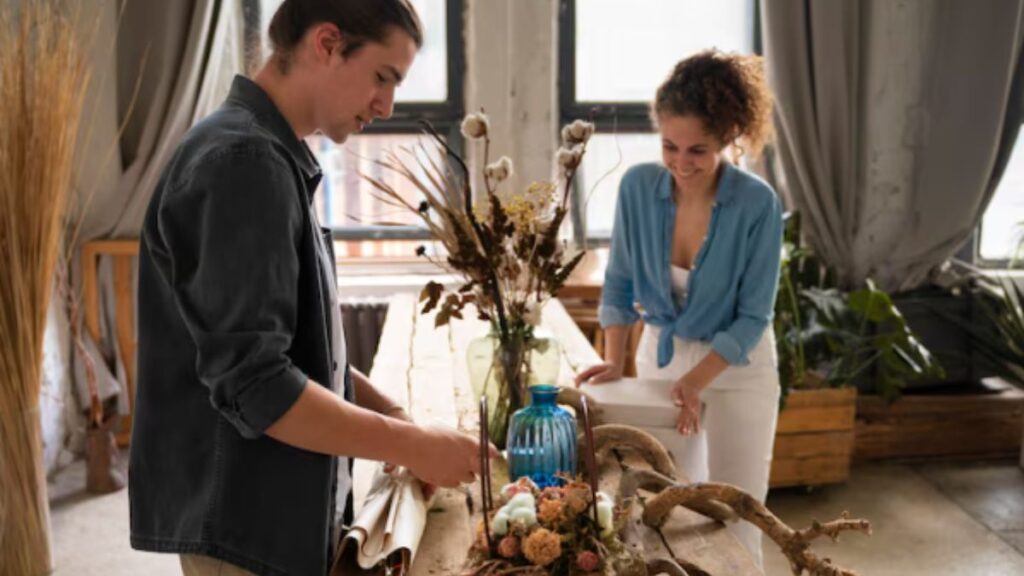Introduction to Pyntekvister
Pyntekvister, a term that might not roll off the tongue for everyone, carries a rich history steeped in Norwegian tradition. These beautifully crafted wooden structures have been an integral part of Scandinavian culture for generations. Initially designed to enhance functionality and aesthetics in homes, Pyntekvister are now experiencing a resurgence as modern design enthusiasts seek to infuse their spaces with authenticity and charm. From rustic cabins nestled deep within Norway’s forests to sleek urban apartments, the versatility of Pyntekvister is captivating homeowners worldwide. Join us as we explore this fascinating evolution from its traditional roots to contemporary applications in interior design.
The Traditional Use of Pyntekvister in Norway
Pyntekvister, intricately carved wooden ornaments, have deep roots in Norwegian culture. Traditionally, these decorations adorned homes and buildings, showcasing craftsmanship that dates back centuries.
Crafted from local timber, Pyntekvister often feature motifs inspired by nature and folklore. Each piece tells a story, reflecting the values and beliefs of the community.
In rural areas, they served as symbols of prosperity and protection. Families believed that such embellishments invited good fortune into their homes while warding off negative energies.
These stunning carvings were not just decorative; they held significance during festivals and special occasions. They brought color to long winters and added warmth to communal gatherings.
As Norway embraced modernization, these traditional practices began to fade. Yet the love for Pyntekvister remains strong within many households today—connecting generations through artful heritage.
Modern Applications of Pyntekvister in Interior Design
Pyntekvister have found a fresh voice in contemporary interior design. No longer confined to traditional settings, these ornate wooden pieces now grace modern homes with their unique charm.
Designers are experimenting by integrating pyntekvister into various styles—ranging from minimalist to eclectic. They serve as stunning focal points on walls or ceilings, adding texture and character.
Another innovative use involves incorporating them into furniture designs. Think tables or shelves adorned with intricate carvings that echo the heritage of pyntekvister while offering functional beauty.
Color is also being reimagined. While classic wood finishes remain popular, bold paints bring new life to these time-honored elements. This adaptation allows homeowners to personalize their spaces without losing the essence of tradition.
As sustainability becomes increasingly vital, repurposed pyntekvister are emerging in eco-friendly interiors. This not only preserves cultural heritage but also champions responsible design practices for future generations.
How Pyntekvister Have Evolved Over Time
Pyntekvister have undergone a fascinating transformation throughout the years. Initially, these traditional Norwegian wooden frames served purely functional purposes, often found around windows and doors in rustic homes. Their design was simple yet effective, emphasizing practicality over aesthetics.
As global influences seeped into local culture, artisans began experimenting with colors and patterns. This marked a shift from straightforward designs to more intricate styles that showcased craftsmanship.
In contemporary settings, pyntekvister have embraced versatility. They are no longer confined to their original structural roles but now play an important part in interior decor. Designers incorporate them as decorative elements that add character to modern spaces.
Sustainability has also become a key theme in evolution. Many creators focus on eco-friendly materials while preserving traditional techniques, merging old-world charm with modern sensibilities seamlessly.
Step-by-Step Guide for Incorporating Pyntekvister into Your Home Decor
Incorporating pyntekvister into your home decor is a delightful journey. Start by choosing the right spot where these traditional pieces can shine. Consider areas like living rooms, entryways, or even dining spaces.
Next, think about the color palette. Pyntekvister often feature rich hues and intricate patterns. Make sure they complement your existing decor while adding vibrancy.
Mix them with modern elements for contrast. For example, pair a classic pyntekvister piece with minimalist furniture to create an engaging visual dynamic.
Don’t shy away from layering textures. Incorporate textiles that echo the warmth of pyntekvister—think soft throws or woven baskets nearby.
Personal touches make all the difference. Include family photos or heirlooms alongside your pyntekvister displays to create a narrative in your space that resonates deeply with you and guests alike.
The Benefits and Drawbacks of Using Pyntekvister
Pyntekvister offer a beautiful way to incorporate traditional craftsmanship into modern spaces. Their intricate designs add character and warmth, enhancing any room’s aesthetic.
However, there are some drawbacks. These decorative elements can require careful maintenance to preserve their beauty over time. Dust and dirt may accumulate in the crevices, needing regular attention.
Another consideration is cost. Authentic Pyntekvister can be pricey due to the skill involved in creating them. This might not fit everyone’s budget for home decor.
On the other hand, using Pyntekvister supports artisanship and cultural heritage. By investing in these pieces, homeowners contribute to keeping traditions alive while enjoying unique artistry in their interiors.
It’s essential to weigh personal style against practical concerns when deciding on integrating Pyntekvister into your living space.
Conclusion: Why Pyntekvister Are Still Relevant Today
Pyntekvister hold a unique place in the tapestry of Norwegian culture and design. Their journey from traditional craftsmanship to modern aesthetics illustrates their adaptability and enduring appeal. As homes evolve, so too do the ways we integrate these intricate pieces into our spaces.
Today’s interior designers recognize the charm that Pyntekvister bring, marrying them with contemporary elements for a fresh look. These decorative items are not just relics; they have transformed into symbols of heritage blended seamlessly with modernity.
The benefits they offer—such as adding character, telling stories, and enhancing style—make them valuable assets in any home decor toolbox. While there may be challenges associated with their care or integration, these are often outweighed by the beauty and depth they provide.
As trends continue to shift towards sustainable practices and valuing artisanal craftwork, Pyntekvister remain relevant even in today’s fast-paced world. They embody a connection to history while inviting personal expression in every setting they grace. Embracing Pyntekvister means celebrating tradition while creating a unique narrative within your space—a timeless choice that resonates deeply across generations.





